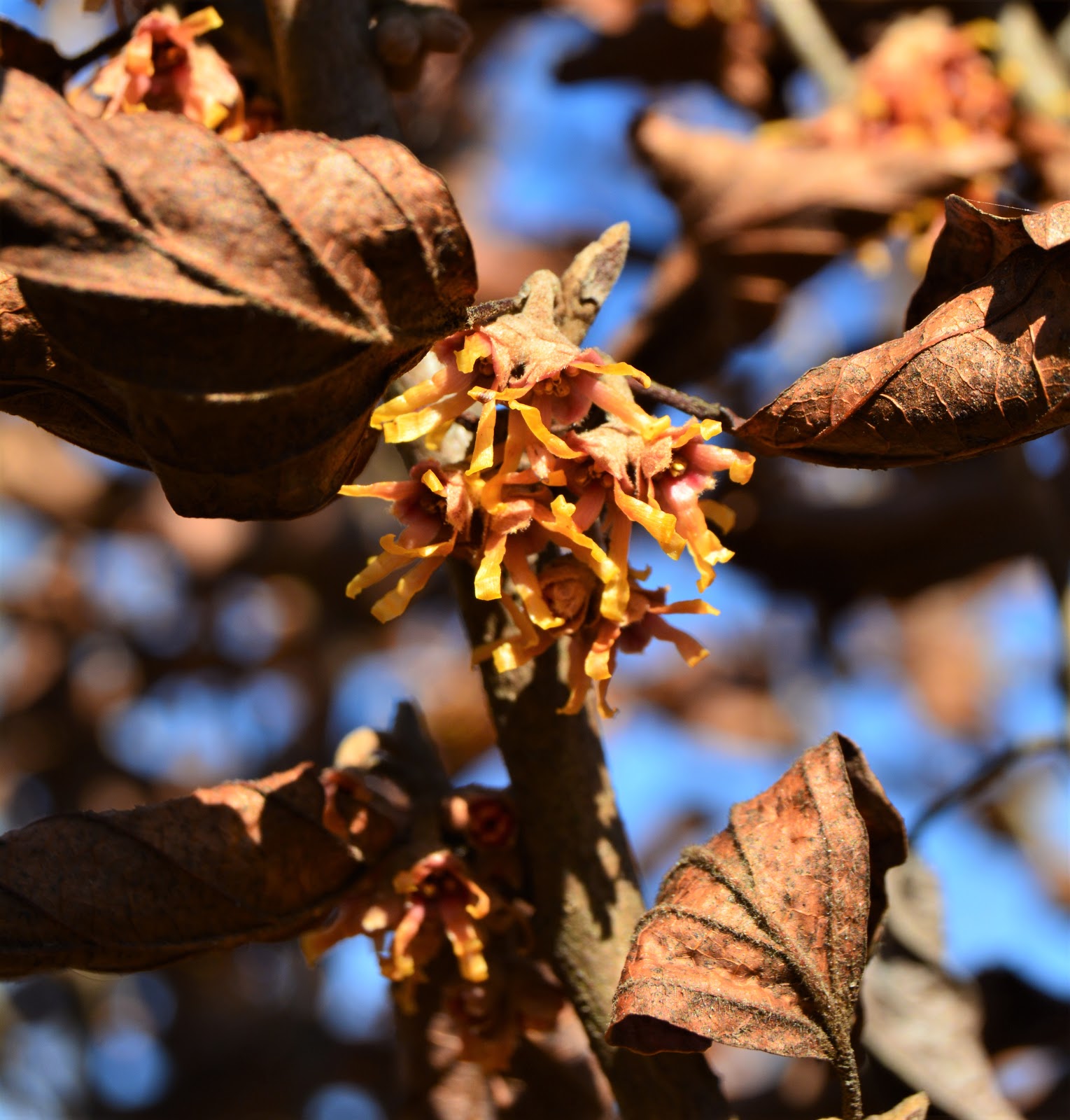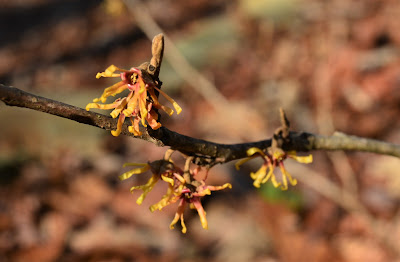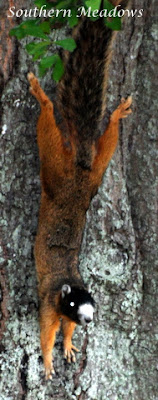Wildflower Wednesday: Hamamelis vernalis
Finding flowers in winter is alluring especially fragrant flowers. They awaken the senses and bring the garden to life, especially during the period when most of the garden is in a state of slumber. Just the other day I was walking the garden, taking in some warm sunshine, when I stopped in my steps because a sweet smell tickled my nose. I realized I was standing near one of our witch hazel shrubs and the fragrance was remarkable. Hamamelis vernalis, commonly called Ozark witch hazel, is native to the Ozarks Plateau. Usually we choose plants that are native to the Southeast, but we planted two vernal witch hazels to cheer up our winter garden.
Our original witch hazel was purchased 8 years ago and is situated under the tall canopy of our hardwoods, benefiting from the shade they provide in the blistering summer months. In winter when the canopy is open, the sun reaches the shrub, encouraging beautiful blooms to open. The large oak, hickory and tulip poplar trees that it resides under soak up much of the water that runs down the sloped landscape in this part of the garden, creating a dry shade situation. In hindsight, not the best place for this native plant that prefers moister conditions. We've enriched the soil by adding rich loam and lots of leaf litter over the years to help it thrive. This multi-stemmed, slow growing shrub reaches 6 to 10 feet tall at maturity and ours is leisurely making its way to the bottom end of its height potential.
Our other Ozark witch hazel is standing in a sunny flowerbed on the East side of our home, in the supplemental water zone. A healthier plant than our original witch hazel, it is larger and stronger in just two short years. Perhaps because it gets more sun and additional water when needed.
The wonderfully fragrant flowers on this shrub resemble small party streamers, but you need to get close to really appreciate them. The crinkly flowers are intermingled with the marcescent leaves on our 'young' shrubs. The scent is only released on warm winter days when the petals unfurl. Otherwise, the ribbon-like petals roll up and retract to avoid freeze damage. So clever!
I have often wondered how flowers that bloom in our coldest months get pollinated. I did some research and according to Bernd Heinrich, author (have you read any of his books? They're excellent) and serious scientist, witch hazel is pollinated by a few species of owlet moths that remain active during winter.
During the day, when these moths are at rest, they often hide in the leaf litter, which provides good insulation. They will go into a state of torpor to save energy, a strategy many animals use to survive extreme environmental conditions, such as freezing temperatures or reduced food availability. In the evenings when these moths are active, they use thermoregulation to raise their body heat to activate their flight muscles. Isn't nature is utterly beguiling!
If pollinated, these blooms will develop small seeds that birds like to eat. This is just another example of why using leaflitter in the garden is so important for the nature's food web to function and why waiting to clean up your garden until spring is critical.
Witch hazel is a long lived shrub and its vase like shape allows underplanting of shade plants, such as ferns, heuchera, and other low lying woodland plants. It works well as a specimen or as a border, along stream banks and as part of a wildlife hedgerow. So many ways to include it in your landscape.
I'm joining Clay and Limestone for the monthly Wildflower Wednesday meme. Do click over to see what other bloggers are sharing from their gardens.
Our original witch hazel was purchased 8 years ago and is situated under the tall canopy of our hardwoods, benefiting from the shade they provide in the blistering summer months. In winter when the canopy is open, the sun reaches the shrub, encouraging beautiful blooms to open. The large oak, hickory and tulip poplar trees that it resides under soak up much of the water that runs down the sloped landscape in this part of the garden, creating a dry shade situation. In hindsight, not the best place for this native plant that prefers moister conditions. We've enriched the soil by adding rich loam and lots of leaf litter over the years to help it thrive. This multi-stemmed, slow growing shrub reaches 6 to 10 feet tall at maturity and ours is leisurely making its way to the bottom end of its height potential.
The wonderfully fragrant flowers on this shrub resemble small party streamers, but you need to get close to really appreciate them. The crinkly flowers are intermingled with the marcescent leaves on our 'young' shrubs. The scent is only released on warm winter days when the petals unfurl. Otherwise, the ribbon-like petals roll up and retract to avoid freeze damage. So clever!
I have often wondered how flowers that bloom in our coldest months get pollinated. I did some research and according to Bernd Heinrich, author (have you read any of his books? They're excellent) and serious scientist, witch hazel is pollinated by a few species of owlet moths that remain active during winter.
During the day, when these moths are at rest, they often hide in the leaf litter, which provides good insulation. They will go into a state of torpor to save energy, a strategy many animals use to survive extreme environmental conditions, such as freezing temperatures or reduced food availability. In the evenings when these moths are active, they use thermoregulation to raise their body heat to activate their flight muscles. Isn't nature is utterly beguiling!
If pollinated, these blooms will develop small seeds that birds like to eat. This is just another example of why using leaflitter in the garden is so important for the nature's food web to function and why waiting to clean up your garden until spring is critical.
Witch hazel is a long lived shrub and its vase like shape allows underplanting of shade plants, such as ferns, heuchera, and other low lying woodland plants. It works well as a specimen or as a border, along stream banks and as part of a wildlife hedgerow. So many ways to include it in your landscape.
I'm joining Clay and Limestone for the monthly Wildflower Wednesday meme. Do click over to see what other bloggers are sharing from their gardens.






.png)
